The British Virgin Islands - Chartering a catamaran for a dream cruise
Destination - CaribbeanThe British Virgin Islands archipelago is made up of about fifty islands. It’s a zone where the trade winds blow almost all year round. Here, distances between locations are short, there are plenty of safe anchorages and the sea is generally calm, which makes it a paradise for sailing on two or three hulls. Sail or motor? We started under sail and finished under motor - this will be the subject of a forthcoming feature article!
Getting to the BVI, as they are known, is already an adventure in itself - even if you reach the archipelago by air. The small airport obviously excludes large aircraft, and you will arrive here on board a small twin-engine propeller plane. On our tiny plane, we met Loïc Bonnet, owner of Dream Yachts Worldwide. His base used to be located in the Scrub Island complex, within reach of a shuttle that transports you every hour from the end of the runway... But the need for real technical logistics was behind the decision of the three main charter companies - The Moorings/Sunsail, Dream and Navigare - to all settle on the south coast of Tortola. We met with the first of them, and in Road Town, the capital of the BVI, we discovered an impressive infrastructure - hotel, restaurant, stores - and above all nearly 300 yacht slips! To save time, it is possible to order supplies in advance. Otherwise, a large supermarket is located around a quarter mile from the marina. You will probably be surprised by the very high prices charged here... remember that the BVI are mainly supplied by cargo ship from the Caribbean and the United States. We should also highlight the tax haven status of the archipelago: it would appear that more than 40% of the world’s companies are registered here! Therefore, we should not be surprised that the average GDP per capita is close to US$ 35,000 - as much as Italy’s...
Short and straightforward sailing
The traditional skipper’s briefing allows us to go over the whole multihull. Our advice? Take a picture - or a video - of the key elements such as the location of the windlass breaker, the water tank valves or the generator start-up. Once the power cables are disconnected and stowed, it’s time to maneuver out of the marina with the help of a dock master. Before us, the huge liner that had been moored in the outer harbor the day before had given way to the Disney Fantasy, one of the four ships in the Walt Disney fleet. At 1,115 feet (340 m) in length and 121 feet (37 m) in the beam, and a capacity of 4,000 passengers, the ship that cost $ 900 million is impressive with its suspended water slide. I promised 12-year-old Willy that we’d enjoy some great swimming, but that’s hard to beat!
Leaving the approaches to Road Town, we encountered 20 to 22 knots of true wind - this tallied with the forecast, which predicted winds of Force 1 or 2 during the next two days. I decide to start the cruise gently - let’s go for a long tack solely under genoa. Our objective was to reach Norman Island, the southernmost island of the archipelago. We remained within striking distance of the base: 6 or 7 miles, no more! This is one of the main attractions of the BVI as a destination: all the islands are close to each other. The Little Sisters archipelago, which joins Virgin Gorda, even manages to form a vast stretch of water that is virtually protected from the offshore swell. In short, you discover from the very first sail that there is plenty of wind, not too much sea and that the distances are short - what more could you want for a crew that has just escaped from its daily routine and barely recovered from the trip to get there?
The magical lights of the Little Sisters
The northwest-facing coast of Norman Island has four anchorages, the best protected of which is The Bight. This spot has many mooring balls for rent. As soon as we’re moored up, the crew all start to get into their swimming gear and don their masks, flippers and snorkels. Bingo! From the first dive, the turtles came to visit us! A dock allowed us to easily tie up the dinghy in front of a charming bar and beach. The bay, which faces west, is perfect for enjoying beautiful sunsets. The next morning, I decided to do some real sailing: the wind was a steady 25 knots, which justified taking in a reef. With the genoa fully unfurled, I started a brisk yet comfortable tack. Several tacks took us right to the center of Great Harbour, at Peter Island. Not convinced by the main anchorage, we continued our winding route eastward to Cooper Island, where we organized our lunch. The beach is bordered by a luxurious hotel complex; to the south, a pink house and a pontoon beckoned us ashore for a short stroll. It’s a nice anchorage but it can be a bit tricky as it is fairly exposed.
The legendary lagoon of Virgin Gorda
It was time to hoist the sails for the next leg of the journey to Virgin Gorda, one of the highlights of the BVI as a destination. This island in the east of the archipelago has two must-see attractions - The Baths and Saba Rock. Let’s start with The Baths: they are huge granite blocks that overlap on the edge of a beautiful sandy beach. The site is reminiscent of the Seychelles - you will probably not be alone there. The anchorage is organized on buoyed moorings near the shore; you can get closer in the dinghy, but not as far as the beach. On land, you can get lost in an extraordinary tangle of rocks in lush vegetation, tiny beaches and clear waters. It is best to go there at the end of the day when the light is ideal, but not necessarily to stop overnight because it’s an area which is often quite choppy. It is no longer possible to visit the former official site, but another spot is accessible further south. Just two miles north, Spanish Town, the capital of Virgin Gorda, is attractive. The small town offers a harbor and a good anchorage for the night – there are moorings located north of the harbor. You can sneak between the reef and the beach, but be careful if the swell gets up: the passes are narrow and the surf can pick up quickly. Ashore, you will discover some nice restaurants like the Bamboo, well known by sailors.
Day 3: The trade winds were really strong, peaking at 30 knots. It’s no bad thing though, because today our photographer would be shooting us from the Leopard 464PC that we were going to be taking over later on. We hoisted the mainsail with the first reef, unfurled the genoa and tacked to reach the north of Virgin Gorda: the channel into the mythical lagoon runs between Mosquito Island (owned by Richard Branson since 2007) and Prickly Pear Island. Four years ago, 18 months after the terrible impact of Hurricane Irma, I discovered a devastated paradise; today it has regained its beautiful colors, even if the strong wind does take the shine off it somewhat. Because of the currents and the residual chop of the sea, the white sand, which is so light, remains partly in suspension and significantly alters the transparency of the water. It seems that you have to choose between sailing and diving...
Tying up alongside the powercat just north of the SandBox bar, we left the Moorings 4500 with all of our kit and boarded the 464PC - I promise to tell you all about this unique experience!
The next morning, we moored in front of the beautiful Bitter End marina. Our program: a short trip ashore followed by an unforgettable lunch on the islet of Saba Rock. A brand-new setting, but worthy of a postcard: It was a real treat for sure... but you only live once, apparently!
Wild Anegada
From Virgin Gorda, the angle of the wind was fair for heading to the island of Anegada. Even with the engine, we could avoid sailing against the sea: we were thus well set for a 12-mile crossing, with the wind on the beam. The sea can be rough during the first third of the route, but then the swell drops rapidly due to Anegada’s shallow waters, which extend far to the southeast. The approach to the island can be confusing for the sailor: while Tortola and Virgin Gorda are perfectly visible behind you, you can’t see anything in front of you... This is quite normal: Anegada is so low (its highest point is only 26 feet/8 m high) that only trees, and then the odd building appear on the horizon. Gradually, the chop disappeared and the water cleared up, becoming green-turquoise. We could see the bottom of the sea but, as in Virgin Gorda, the suspended sand means that the water was not as clear as it could have been... Although the island is not high, it is large – twelve miles by three (19 km long and 5 km wide) - and surrounded by sublime beaches. Coral reefs limit the access by boat to Setting Point. The anchorage is vast, and not surprisingly popular. Less than a mile to the west, another anchorage is possible. This one is almost deserted, but sometimes the surf makes it difficult to disembark in a dinghy. In the evening (and even at night!), the atmosphere was particularly festive at Potter’s Bar, where crews mark their passage on the beams and walls of the establishment. But since the opening of other more chic restaurants, it seems that this historic bar-restaurant is struggling to fill up. For me, there is no better place to enjoy a Painkiller, the local cocktail, a spicy and fruity variant of the Pina Colada, and above all to enjoy the most beautiful sunset. Afterwards, for seafood lovers, the lobster is a must... On land, there are mangroves, bush, salt marshes where pink flamingos have been reintroduced and incredibly beautiful lagoons: you can rent bicycles or scooters to discover them, on mainly empty roads and paths, since only 200 inhabitants have settled on this island and there are few tourists.
Jost for those in the know...
From Anegada, the first anchorage of Jost Van Dyke, affectionately called Jost or JVD, is 27 miles away. On the scale of the BVI, it is about the longest possible sail, and you are out on the ocean. First, you will round the tiny sandbar of Sandy Spit, with its two small coconut palms, and then discover Diamond Cay. It is a superb spot for snorkeling. Ashore, the painted letters of Jost Van Dyke are very close to Bubbly Pool; the astonishing natural pool with (very large) eddies. Two other anchorages are worthy of note: Great Harbour, where you can party ashore (at Belle Vue, Foxy’s is the place to be) and White Bay, which offers a magnificent beach.
Less than 8 miles east, on the island of Tortola, Cane Garden Bay is worth a stop: there is a pleasant atmosphere, the beach is beautiful, and it is here that you will find the “I love BVI” made out of a few pieces of wood and some paint. There is nothing really official here: you are just supposed to have a drink and take a picture. It’s the law of the beach...
We continue our route towards Guana Island and White Bay beach. Immaculate white sand, translucent water and coconut palms. We are in paradise, but there are small jellyfish too. Too bad! This anchorage can be quite rough. There is not much to do on land. There is only access to the shore here because the whole island is private.
We continued our route towards Scrub Island to anchor in Trellis Bay; there is nothing exceptional about this anchorage, apart from the fact that it is perfectly protected and especially close to the airport - the terminal is only a few hundred feet from the dock! This is where Andy disembarked. He had to catch a flight a day earlier than us.
I decided to take my remaining crew to Marina Cay: this islet, with its famous, red-roofed fuel station and its bar, the Robb White House, used to be one of the highlights here.... Except that since October 2019, it is now closed to the public!
Never mind, we headed for the Sister Islands. We approached Salt Island, still frozen in time since hurricane Irma. The few houses still standing have been boarded up, and there’s nothing more to see. Less than a mile to the west, there is a wreck which is of particular interest to divers: the RMS Rhone, a British Royal Mail steamer, was wrecked here during a hurricane in 1867. Mostly intact, it is easily accessible for divers equipped with tanks (20 to 80 feet/7 to 24 meters deep). It is also visible for snorkelers... provided that the sea is calm.
We briefly ventured out into the open sea by going around the south side of Peter Island: we had planned to meet Jérôme’s Moorings 4500 at White Bay Beach, a nice and quiet anchorage. For our last night, we decided to take advantage of the excellent shelter of Great Harbour.
This location, that we had snubbed five days earlier is ultimately rather disappointing, just like its numerous out-of-use moorings. However, it is a good place for snorkeling: the southern shoreline has lots to see! We meet Thomas Gailly, the boss of Lagoon (he and his family would take the same flight as us the next day to Saint-Martin). It seems that everybody comes to sail in the BVI!
Mooring Buoy or Anchorage?
The main anchorage areas of the BVI are equipped with well-maintained buoys - except at Great Harbour, where many are punctured and/or the pick-up lines are missing. We recommend that you use moorings in these areas to avoid damaging the seabed, to be sure not to drift at night and to be safe from other boats. For charter catamarans, the available chain length is limited to 160 feet (50 meters) - you get the freeboard height once the bridle is secured but it is not advisable to anchor in more than 40 feet (12 meters) of water. In some waters, it is possible to reserve a mooring in advance - these are the red buoys. Generally, daytime mooring is free. However, it costs US$ 30 to 40 per night for a 45-foot catamaran.

THE Moorings/Sunsail in Tortola
The world’s largest charter boat base?
The Moorings/Sunsail base in Road Town has nearly 300 boats and is probably the largest charter facility in the world. It is interesting to note that multihulls (sailing catamarans and powercats) now represent two-thirds of the fleet. The base is open all year round, but obviously slows down in August and especially in September, during the hurricane season. During this period, it is not advisable to pre-book a boat. Only a local reservation at very short notice is possible.
Chartering a Catamaran in the BVI: How much does it cost?
We managed to get hold of the quoted prices for a week’s catamaran charter operated by The Moorings, departing from Tortola. Please note: these prices, valid at the time of writing, are subject to change, either up or down - a bit like the price of airline tickets...
Sail
Min price: Moorings 4000 - 3 cabins (catamaran over 3 years old), departure October 28 = € 5,023.
Max price: On a Moorings 5000 - 5 cabins (catamaran 1-3 years old), departure December 23 = € 27,873
Power
Min price: Moorings 433PC - 3 cabins (powercat over 3 years old), departure October 14 = € 5,523
Max price: Moorings 534PC - 4 cabins (powercat 1-3 years), departure December 23 = € 32,123
Main multihull charter companies in the BVI:
The Moorings/Sunsail, Dream Yacht Worldwide, Navigare Yachting

Language(s): English, but also Spanish and Creole
Time zone: UTC/GMT - 4 hours year round
Currency: USD - $1 = €0.94
Getting there: the easiest way is to fly to St. Martin, Antigua or San Juan by international airlines and then take a flight to Tortola - the small airport is actually located on Beef Island, connected by a bridge to the main island. There are also sea connections to Road Town.
Formalities: Americans and Canadians must present a passport that is valid for the duration of their stay; French and Belgian citizens must have a passport that is valid for at least 6 months after the return date. A tourist visa is required for a stay of more than 3 months.
BVI: Practical Info
The British Virgin Islands are bordered by Puerto Rico to the west, the U.S. Virgin Islands to the south and St. Martin to the east. The BVI archipelago consists of about 50 islands, but only 16 of them are inhabited and the area is roughly limited to a parallelogram of 12 miles by 30 (20 km x 50) which includes 60 square miles (153 km²) of land - this is barely more than the area occupied by Miami, the 44th largest city in the United States... Road Town, the capital of Tortola, the main island, is located at 18° 26′ 42″ North, 64° 32′ 24″ West. The highest peak, Mount Sage on Tortola, is 1,716 feet (521 m).
Tortola: Weather Check
Average max air temperature: 82°F to 88°F (28° to 31°C)
Average minimum air temperature: 70°F to 75°F (21° to 24°C)
Water temperature: 79°F to 84°F (26° to 29°C)
Annual sunshine: about 3,000 hours
Wind: trade winds from North-East to South-East
Rainfall: 43 inches (1,100 mm)/year
The best time to sail in the BVI archipelago is from December to April, when the weather is generally dry and not too hot... but above all, the easterly trade wind blows at a steady 20 knots or more - a wonderful warm fan! As a result, sailors will have plenty of opportunities to hoist the sails, and it is never too hot in the cabins, even without air conditioning. Those who prefer multi-powered sailing can rest assured that most of the “crossings” do not take place in wide open seas, which is obviously a guarantee of comfort when the wind is strong. Later in the season, it is warmer, the humidity takes over and the trade winds weaken to 15 knots, then 10 in early summer. The rains are then more frequent, especially at the end of the hurricane season - August/September/October.
During this period, some charter bases operate at a slower pace or even close from August 15 to September 30. The weather becomes milder from November onwards - and the trade winds strengthen again.



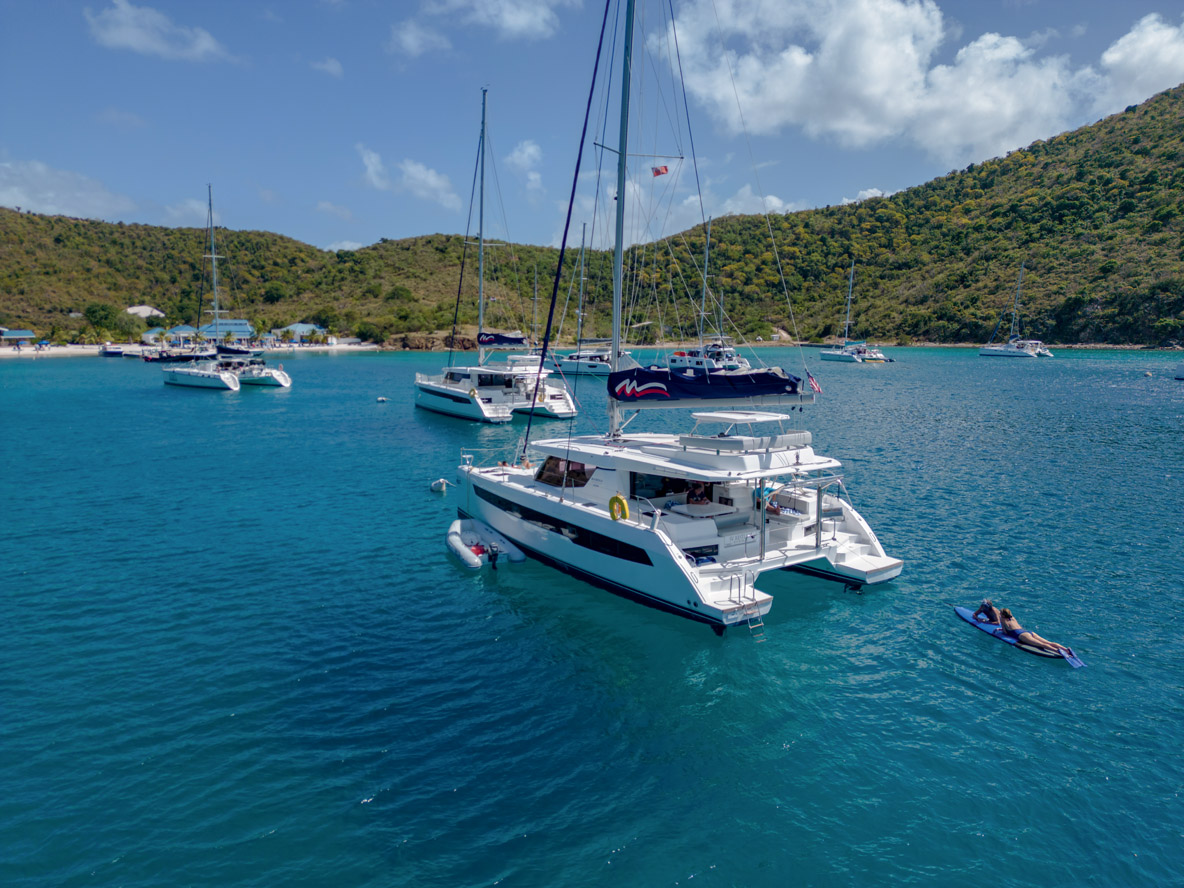



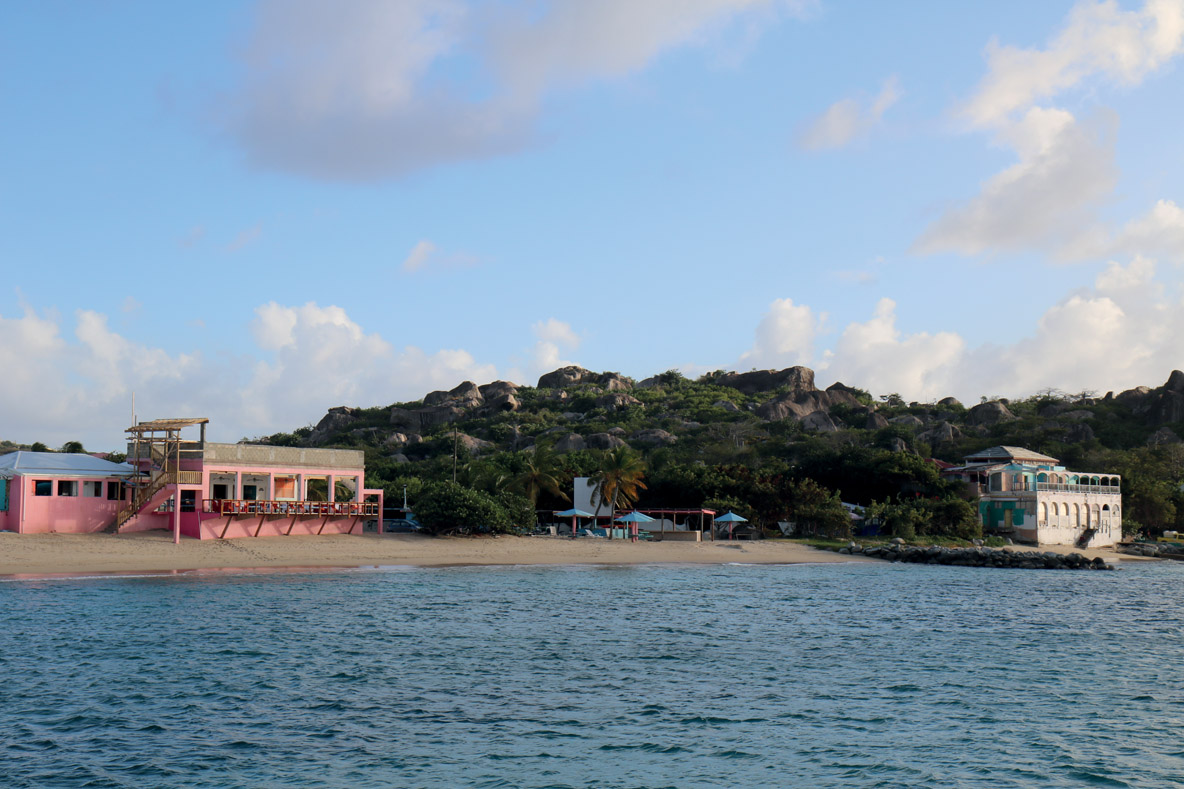














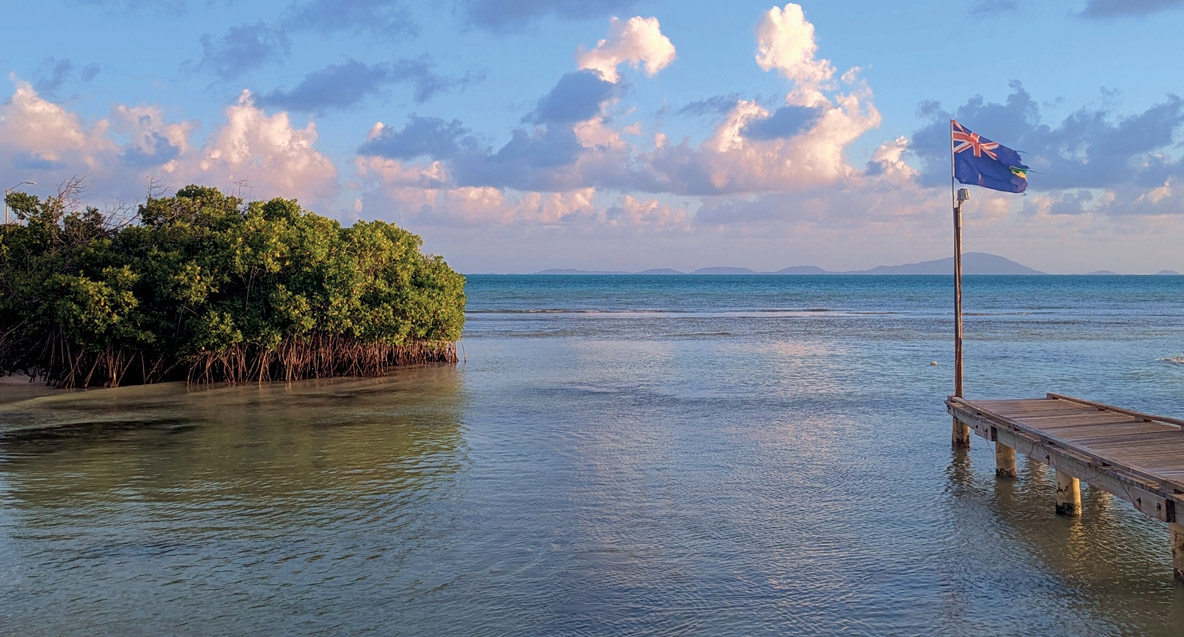

Destinations offered by
View all the destinations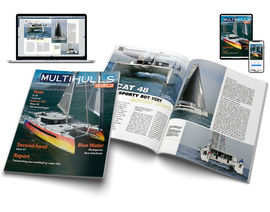
 Discover the 2025 winners!
Discover the 2025 winners! 
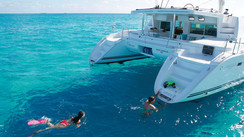
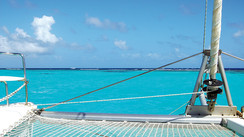
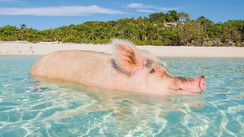
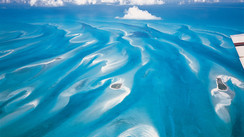
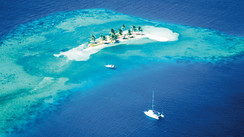
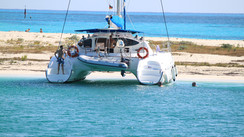







What readers think
Post a comment
No comments to show.